The Background:
In 2016, a majority of UK MPs voted to ban the manufacture, sale, possession and use of snares outright. The government ignored this and instead introduced an unregulated voluntary Code of Practice. Since then, a damning catalogue of breaches has been documented by HIT, NASC and other groups. The Code of Practice is demonstrably failing on multiple levels and snare users have consistently proven themselves incapable of self-regulation. In 2023, Wales banned snaring: a monumental step which paves the way for outright ban on snaring in Scotland and England. HIT continues to fight for this.
The Current Situation:
Despite snares being banned in the majority of European countries, they can still be used in England and Wales with little to no regulation or enforcement of wildlife protection legislation. Where successful prosecutions are brought for wildlife crimes involving snares, penalties are minimal.
The situation is brought into sharp relief when we consider the huge numbers of snares in use in England and Scotland – hundreds for each shooting estate and many more on farmland. These high numbers of unregulated snares in use inevitably lead to an unacceptably high rate of suffering
When the voluntary code was introduced in 2016, Jonathan Reynolds, GWCT Head of Predation Control Studies said, “We face the loss of snares unless there is wholesale compliance with the new Code of Practice”. Snare users know they are clinging onto snares by a thread. Yet far from wholesale compliance, evidence from the ground suggests widespread and persistent non-compliance with the voluntary code on snaring. Even by DEFRA’s own assessment, snare users persistently fail to comply with the rules.
Snare users have been given ample opportunity to demonstrate voluntary compliance but have repeatedly proven themselves untrustworthy. Yet given the volume of snares used and the remote rural locations in which they are placed, police may also say it is impossible for them to regulate or enforce legislation. Quite simply, an outright ban is needed.
The Evidence:
HIT have compiled evidence of the persistent breaches of law and guidance by snare users in England and Wales. Evidence has been taken from our own first-hand accounts and from the work done by other groups.
The guidance referenced is taken from the industry’s own publications. The voluntary agreements they have committed to but persistently breach can be found here.
The examples below have been documented since the code came into place in 2016. They illustrate graphically, tragically and compellingly that the current arrangement is failing beyond repair.
We share these cases to highlight the plight of wild and domestic animal in the UK today. We appeal to readers to submit their own reports. Such an overwhelming body of evidence will help us consign snares to history. Find out how to recognise the signs here!
- Snares should not be set under or near fences or other obstructions, like saplings, hedges, walls or gates that could cause entanglement.
HIT received shocking footage obtained by a member of the public in Pembrokeshire, Wales in 2019. A fur trapper had set snares along hedgerows of country roads throughout the national park and on the boundaries of nature reserves. Passers-by found live foxes caught in the snares, which the trapper then bludgeoned to death in full view of the public. Skinned bodies were thrown back in the hedgerow. Snares are often found by fences and hedges, because wild mammals often use runs passing along and through them.

- It is an offence for a person to cause unnecessary suffering to an animal under their control (this applies to animals while held in snares and the means by which they are killed)
A member of the public filmed the fur trapper in Pembrokeshire. The fur trapper brutally bludgeoned and crushed snared foxes to death, using multiple blows with a blunt wooden bat then stamping on them in the road. Although this constituted clear unnecessary suffering, no prosecution was brought. This case is rare in being recorded. The true brutality inflicted on victims by snare uses goes widely unseen.
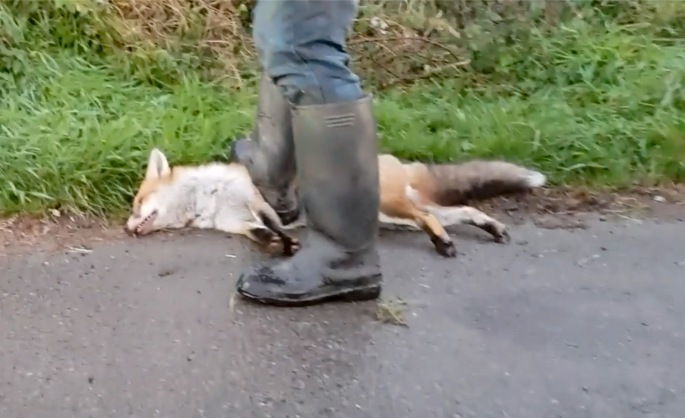
Additional evidence was obtained by the Hunt Investigation Team in Derbyshire, on Bamford Moor in spring 2017. Here, a gamekeeper was filmed botching a badger release from not one but two snares. He fired multiple shots at the wire noose and eventually severed it with a spade (leaving the snares still around the badger’s neck). The badger suffered for a prolonged period in the hail of bullets, desperately trying to escape. Despite clear evidence of lengthy and unnecessary animal suffering, no prosecution was brought against the perpetrator.
- It is an offence to cause unnecessary suffering to a domestic animal
Evidence was presented by National Anti-Snaring Campaign and local media, in Worcestershire in June 2019. A pet cat suffered serious injuries in snare in Malvern. This beloved pet suffered significant injuries, dehydration and starvation as a result of his ordeal. He was thankfully found by a dog walker but many other pets suffer and die unseen.
Previous evidence from NASC and local media in autumn 2018 also documented a pet Dachshund killed in a snare in Llandinam, Dyfed-Powys, Wales. The Dachshund died after being caught while out on a walk, leaving his human family devastated. There have been many more instances documented around England and Wales of pets being caught, killed and injured in snares.
- Snares should not be set in areas regularly and legitimately used for the exercise of domestic animals, near public footpaths or housing
The cases above also illustrate how this clause is breached. The pet Dachshund died on a routine walk, on land where permission had been granted to walk. Yet there was no warning about the presence of snares, leaving all pets immediately at risk.
- Snares should not be set on or near to an active badger sett, or on the runs radiating from it
Badgers are – in theory – a protected species in the UK, meaning it is illegal to persecute them. Evidence of repeat badger snaring has been documented by HIT in Derbyshire in 2017 & 2020. In both cases, gamekeepers from the Moscar Grouse Shooting Estate repeatedly set snares on active badger runs. Inevitably, badgers were caught. Despite knowing that badgers were in the area, the gamekeepers subsequently continued trying to set snares in these locations – yet were never subject to a prosecution. Monitors were told that the police considered badgers to be “collateral damage”.
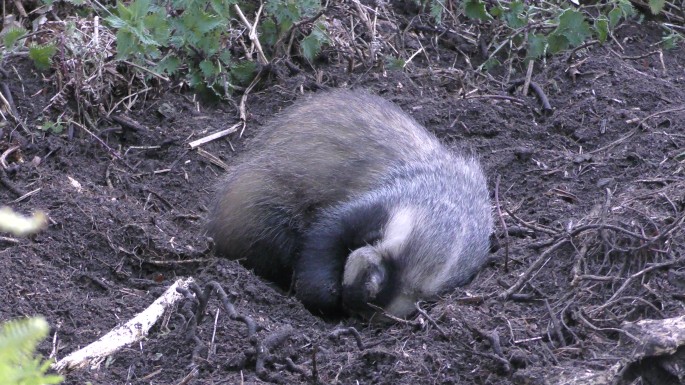
Evidence has also been documented by NASC in Hampshire, in Dec 2019. Yet again, a gamekeeper set snares on an active badger run, this time on a pheasant shooting estate. The badger was snared and shot. NASC were able to retrieve the badger’s body from where it had been hidden, but again, no prosecution was ever brought for the snaring and killing of this protected species. Gamekeepers undoubtedly recognise the distinctive signs of badger presence – but know they that the law is too weak to have any serious consequences for them if they set snares on badger runs.
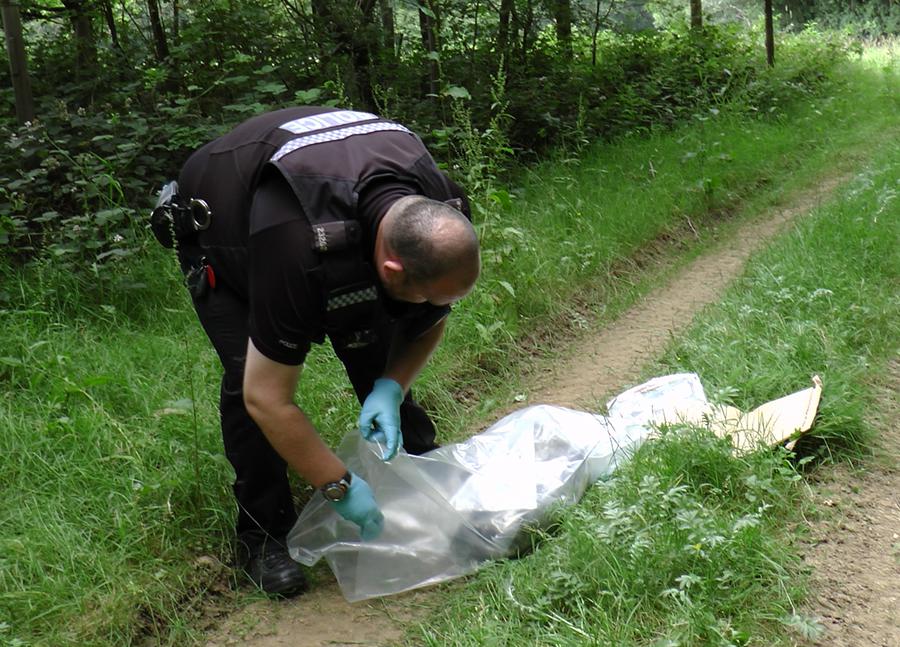
The Hunt Saboteurs Association have another harrowing account of rescuing a badger from a snare, which can be found here. The badger was rescued and taken for urgent veterinary care but sadly had to be euthanised. The snare had cut through her chest, almost to her heart.
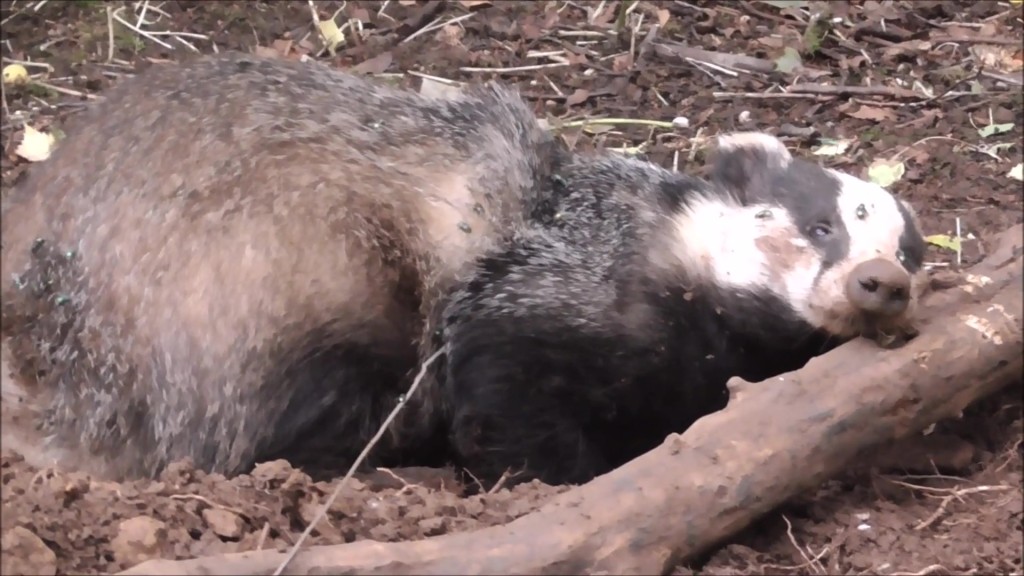
• Snares must be inspected at least once a day while set
Evidence was obtained by a birder in North Yorkshire, on Denton Moor in March 2018. In this case, a badger was killed in a gamekeeper’s snare that was not checked every 24 hours. Gamekeepers sometimes leave snares in position but “inactive”, looped away from the run. However even if not formally set, the wire loops can and do still catch victims. The suffering can be prolonged if the gamekeeper decides not to check their “inactive” snares and the victim is not discovered. This case was unusual in that it led to a successful prosecution.
Even when checked daily, this still means that animals suffer for many hours while caught, in all conditions. The Animal Welfare Party spoke out on snaring, after being made aware of reports of a vixen rescued from a snare late on winter afternoon. Read their statement here.
- It is illegal to set in position any trap or snare calculated to cause bodily injury to any deer coming into contact with it
In December 2018, NASC published video footage of a deer caught and wailing in a snare on the Norfolk Estate in Suffolk. Thankfully, NASC were safely able to release the terrified creature, but many more will not be so lucky. As with badgers, the legal emphasis is on the snare users’ intention to catch or injure one of these species. Proving intent or calculation of this nature is virtually impossible, meaning that gamekeepers routinely get away with breaking the law.
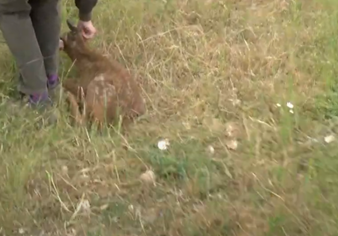
- It is illegal to set in position any trap or snare calculated to cause bodily injury to any wild animal included in Schedule 6 of the Wildlife and Countryside Act 1981 (currently including badger, polecat, otter, red squirrel, hedgehog and pine marten).
NASC have previously documented otters caught in snares. We would be especially grateful for further evidence of animals categorised under Schedule 6 – please do be vigilant and report any findings.
- You must dispose of carcasses safely, so they do not cause harm to human health or pollution of the environment.
Animals which have been snared and killed have been routinely thrown onto stink piles – lures of bait to draw in more predators to their death. Public pressure has been hugely effective in reducing the use of stink pits in local areas but the practice continues, contrary to the code. Please document and report stink pits to HIT and to local Trading Standards, who should take swift action to remove them. Without stink pits, snares are much less efficient
- Snares should not be set where livestock could be caught.
Evidence has been provided by numerous monitoring, welfare and investigation groups showing that lambs are continually being caught in snares, risking injury, exposure, fear and suffering. Monitors frequently have to release lambs during the springtime, when snaring is especially intensive.
- You must be competent and equipped to deal humanely with any foxes or other animals that can reasonably be expected to be caught.
Direct observations of snare users in the cases documented by HIT in Pembrokeshire and Derbyshire show clearly that the snare users did not meet this criteria. We would be very interested to hear any more cases of incompetent and ill-equipped individuals currently operating in the countryside.
- If forecasted weather conditions are likely to cause poor welfare or prevent daily inspection. Excess heat as well as cold/wind/rain/snow, etc. must be considered.
Snares have been reported by local monitors in various regions through the coldest, hottest and wildest weather. Gamekeepers do not appear to heed this warning, leaving any captured animals subject to the extremities of weather on top of any injuries sustained.
- It is illegal to use a ‘self-locking’ snare.
Please continue to provide any evidence of self-locking snares in use. We know they are widespread in the countryside, and again they show how snare users continue breaking the law.
HIT also argues that this clause is flawed. Many ostensibly “free-running” snares become self-locking in practice, once the wires become warped and frayed by an animal trying to escape. This was evidenced by HIT at Bamford Moor 2017 – where a snared hare was found dying with a supposedly free-running snare warped tightly into her abdomen. The snare would not release, even with human intervention. The poor creature suffered massive internal bleeding and shock and died in our arms.

- Under the Animal Welfare Act 2006, you are responsible for taking reasonable steps to ensure that the welfare needs of all animals under your control (including those caught in a snare) are met, to the extent required by good practice. In this context, that the animal is protected from pain and suffering.
This clause is virtually unworkable. The mountain hare above illustrates how even a “target species” can suffer catastrophic injuries and death as a result of being caught in an apparently legal snare. The only reasonable step which can be taken to prevent potential pain and suffering in a snare is quite simply not to use a snare. DEFRA’s own research (Determining the Extent and humaneness of Snaring in England and Wales) has shown that one the snare models still advised for use is inhumane.
There are many more clauses of the code which can easily be shown to be regularly breached. We are appealing for any more evidence from members of the public who can help us illustrate the extent of the damage inflicted by snares in the UK.
It is worth returning to the words of Jonathan Reynolds, GWCT Head of Predation Control Studies in 2016. He said, “We face the loss of snares unless there is wholesale compliance with the new Code of Practice”. We are evidencing persistent, widespread non-compliance with the Code of Practice. Snare users have been given ample opportunity to earn the trust of the public and politicians. They have resolutely failed. The outright ban proposed and voted for by MPs in 2016 is the only way forward.
- Help the UK be #Snareaware
- Share our social media posts to spread the word
- Follow and support other groups working on the issues
- Gather evidence from your local area and online
- Ask your MP for support to Ban Snares
